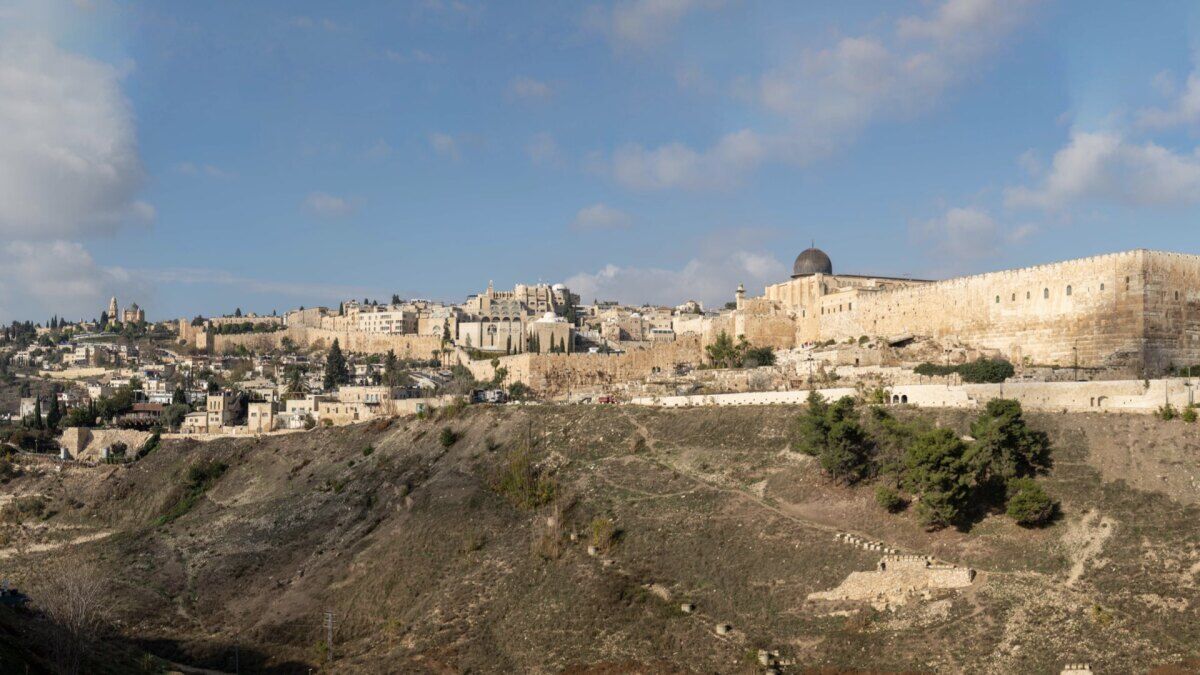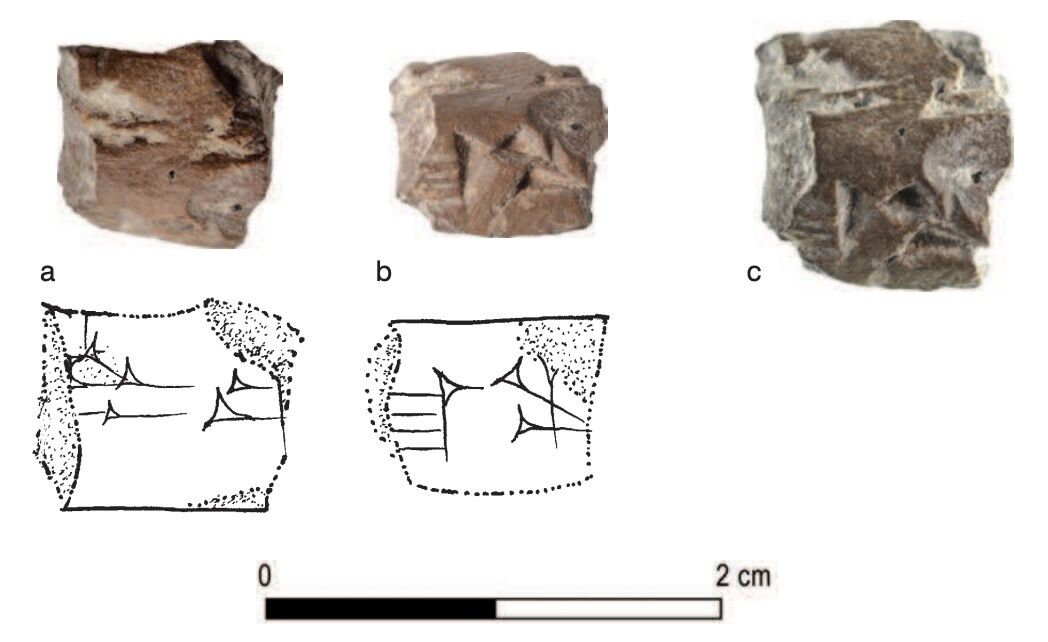During our 2013 season of the Ophel excavations in Jerusalem, directed by Dr. Eilat Mazar, a tiny piece of a cuneiform inscription was discovered. The tablet was first published in an article titled “Jerusalem 2: A Fragment of a Cuneiform Tablet From the Ophel Excavations,” by Eilat Mazar, Y. Goren, W. Horowitz and T. Oshima (Israel Exploration Society Journal, Volume 64). Unfortunately, the discovery received little attention at the time of publishing.
According to the researchers, the tablet most likely dates to the 13th century b.c.e., making it the second oldest piece of writing ever found in the city. The small fragment (measuring 9.5 millimeters by 9 mm by 5 mm) containing ancient cuneiform text is only the second such tablet to be discovered in Jerusalem, and thus is referred to as “Jerusalem 2.”

The Jerusalem 1 tablet was unearthed during the 2009 season of the Ophel excavation approximately 65 meters further south from where Jerusalem 2 was located. Both of the fragments were found inside an early Iron iia fill (10th century b.c.e.). Both were also discovered by the keen eye of wet sifting manager Efrat Greenwald. (As a credit to the late Dr. Mazar, even though wet sifting increases the cost of the excavation, since 2006, all Iron Age areas on her digs went through the labor-intensive process. Without it, discoveries such as the seal impressions of King Hezekiah or Isaiah would not have been discovered.)
A direct comparison between the two fragments reveals they were not part of the same tablet. According to an inspection by Assyriologist Prof. Wayne Horowitz, the two clays are visibly different, as are the sizes of the signs (or letters). Unfortunately, the markings are so few that it is impossible to deduce a reading of the text, although the language is most likely Akkadian.

Despite the small size of the fragments, there is much that can be learned from them. Outside of the style of the letters, scientists can study the composition of the clay to deduce a point of origin. The Jerusalem 1 inscription was made of local Jerusalem terra rosa earth. Along with the particular form of its letters, researchers believe it was part of the group of Canaanite cuneiform tablets known as the Amarna Letters. These tablets, found primarily in southern Egypt, date to the 14th century b.c.e. and constituted correspondence from the rulers of city-states in Canaan (of which Jerusalem was one) to the Egyptian pharaoh.
Jerusalem 2, however, is different. According to the study, “the composition [of the clay] is not local to the Jerusalem area.” Instead, based on a series of testing methods including portable X-Ray Florescence and optical mineralogy analyses, the researchers believe the clay composition of Jerusalem 2 is “more keeping with the typical Egyptian Nile sediments” and, in particular, most likely a part of a cluster of tablets from the “Ramesside era, and not in the cluster of Egyptian letters from El-Amarna.” This means that Jerusalem 2 was created about a century after Jerusalem 1.
Chronologically, this would place the writing of Jerusalem 2 during the judges period, when the Jebusites still ruled Jerusalem and just over two centuries before King David would make it his capital.

The authors of the study offer this conclusion: “[W]e suppose that the fragment would be appropriate for a finely written letter from pharaoh’s court in this period to a king of Jerusalem. If this proposal is correct, Jerusalem 2 would be later than the letters of Abdi-Heba, the king of Jerusalem during the Amarna period.”
Thus, while small and without enough text to make out a conclusive reading, the two cuneiform tablets still make a valuable contribution to understanding the history of Jerusalem. They show that Jerusalem of the 14th to 13th centuries b.c.e. operated as an important administrative center in the Levant.

The 2013 season of the Ophel Excavation was funded by Daniel Mintz and Meredith Berkman, and conducted under the academic auspices of Hebrew University of Jerusalem with the support of Herbert W. Armstrong College.

